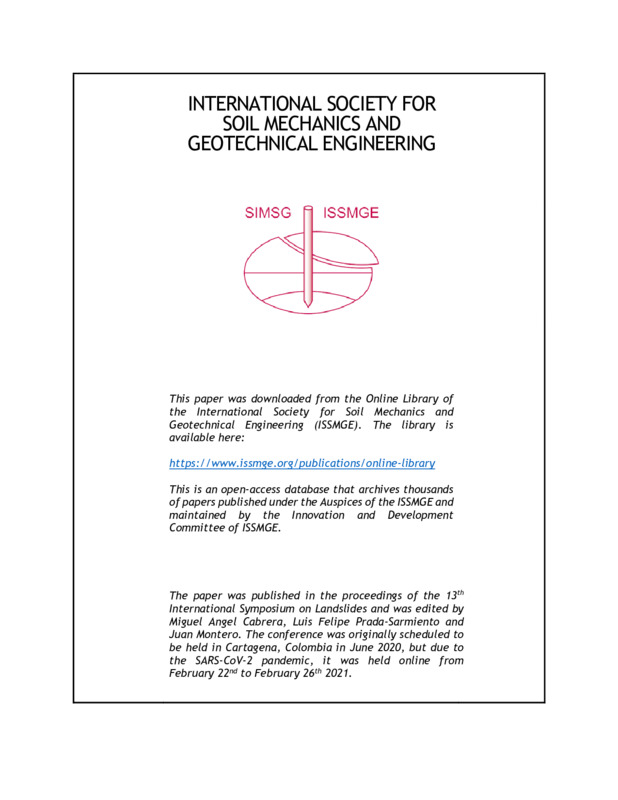Quantitative landslide risk assessment in the city of Tuzla
Објеката
- Тип
- Рад у зборнику
- Верзија рада
- објављена
- Језик
- енглески
- Креатор
- Miloš Marjanović, Biljana Abolmasov, Cvjetko Sandić, Miralem Mulać, Petar Begović
- Извор
- SCG-Xiii International Symposium on Landslides. Cartagena, Colombia- February 22-26, 2021
- Уредник
- Miguel Angel Cabrera, Luis Felipe Prada-Sarmiento, Juan Montero
- Издавач
- International Society for Soil Mechanics and Geotechnical Engineering
- Датум издавања
- 2021
- Сажетак
- In the climate-changing conditions, geological environment interacts more dramatically with the urban fabric than before. The urbanization is expansive and more aggressive than before, but so are the weather extremes and long-term climate trends. In effect, many processes which can be triggered by either side, nature or engineering, are becoming more pervasive than before, and such is the case with landslides. Dealing and managing landslides requires few crucial steps, starting from collecting data on landslide location and typology – inventorying, estimating zones of their spatial probability exceedance, appending zones of their increased temporal probability for a given return period, and finally, estimating which elements at risk these exceeded probabilities can affect and at what level. In this work, a practical case is represented to illustrate all these steps and demonstrate successful implementation of complete landslide assessment (from landslide inventory to risk or early-warning system). The practical example considers the case of the City of Tuzla in Bosnia and Herzegovina, which is known for instabilities due to rugged steep slopes, but also destabilizing effects of underground and open pit mining, which has a long tradition in Tuzla. However, the main motive for considering this case study lies in severe landslidng episode triggered during the heavy rainstorm in mid-May 2014. The landslide inventory was compiled by a combination of historic and post-2014 field reports, while all other inputs, including geological, geomorphologic and environmental factors were coming from a separate detailed study on flooding and landsliding hazard in the City of Tuzla. The inventory of element at risk, in this case the housing sector, represented by weighted population density, was also very important input, which needed to be prepared cautiously, using as realistic estimations on population distribution as possible. Eventually, overlapping spatial and temporal dimension of the process, as well as detailed element at risk inventory, resulted in a very detailed, very realistic landslide risk map. The map depicts realistic risk distribution over the populated areas. Intermediate models, such as susceptibility, exposure, hazard etc., as well as the final risk model suggests good performance, both visually and numerically (high accurancy >75% and AUC of >0.85) and justifies landslide assessment in the future for many aspects of urban planning and related decision-making.
- број страница
- 7
- Просторно покривање
- Bosna I Hercegovina
- Subject
- "landslides", "risk assessment"
- Шира категорија рада
- М30
- Ужа категорија рада
- М33
- Права
- Отворени приступ
- Лиценца
- Creative Commons – Attribution 4.0 International
- Формат
- Медија
 ISL2020-102.pdf
ISL2020-102.pdf
Miloš Marjanović, Biljana Abolmasov, Cvjetko Sandić, Miralem Mulać, Petar Begović. "Quantitative landslide risk assessment in the city of Tuzla" in SCG-Xiii International Symposium on Landslides. Cartagena, Colombia- February 22-26, 2021, International Society for Soil Mechanics and Geotechnical Engineering (2021) М33
This item was submitted on 25. новембар 2021. by [anonymous user] using the form “Рад у зборнику радова” on the site “Радови”: http://gabp-dl.rgf.rs/s/repo
Click here to view the collected data.